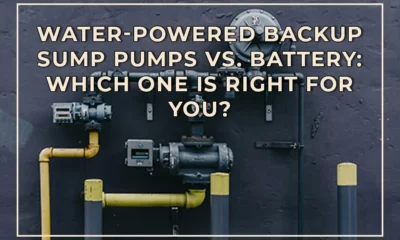DIY Closet
How to Fix a Tub Spout That Is Not Flush with the Wall

[ad_1]
In this article, we will discuss how to fix a tub spout that is not flush with the wall. If you have noticed that your tub spout is not sitting flush against the wall, it can be both an aesthetic and functional issue. An improperly installed tub spout can lead to water leaks and cause damage to the surrounding areas. The good news is that you can easily fix this problem with just a few simple steps. Read on to find out how to address this common issue and ensure that your tub spout is properly installed.
Why is My Tub Spout Not Flush with the Wall?
If your tub spout is not sitting flush against the wall, there are a few possible reasons for this issue. One common reason is that the spout was not installed correctly in the first place. This could be due to improper sealing or insufficient caulking, causing the spout to protrude from the wall. In some cases, wear and tear over time can also lead to a loose or misaligned tub spout.
To determine the cause of the problem, inspect the area around the spout for any visible signs of damage or wear. Ensure that the spout is securely attached to the pipe coming out of the wall, as loose fittings can also contribute to this issue.
How Can I Fix a Tub Spout That Is Not Flush with the Wall?
To fix a tub spout that is not flush with the wall, start by removing the spout from the wall. Use a pipe wrench or adjustable pliers to grip the spout and turn it counterclockwise to loosen it from the pipe. Once the spout is removed, inspect the pipe and the inside of the spout for any debris, corrosion, or damage that may be preventing a flush fit.
Clean the pipe and spout thoroughly, and apply plumber’s tape to the threads on the pipe to ensure a tight seal. When reattaching the spout, ensure that it is properly aligned and use the wrench to turn it clockwise until it is securely fastened against the wall. Apply a bead of caulk around the base of the spout to seal any gaps and prevent water from leaking behind the fixture.
What Tools Do I Need to Fix a Tub Spout That Is Not Flush with the Wall?
To fix a tub spout that is not flush with the wall, you will need a few essential tools. These include a pipe wrench or adjustable pliers to remove the spout, plumber’s tape to seal the threads on the pipe, and a caulking gun and waterproof caulk to seal any gaps around the spout. Additionally, having a rag or towel on hand to clean the pipe and spout before reattachment is recommended.
Can I Fix a Tub Spout That Is Not Flush with the Wall Myself?
Yes, you can fix a tub spout that is not flush with the wall yourself. This is a relatively simple DIY task that does not require extensive plumbing knowledge or experience. With the right tools and a little bit of time, you can easily address this issue and ensure that your tub spout is properly installed and functioning as it should.
Conclusion
Having a tub spout that is not flush with the wall can be both a visual and functional concern. However, by following the steps outlined in this article, you can easily fix this issue without the need for professional assistance. By properly installing and sealing your tub spout, you can prevent water leaks and ensure that your bathroom fixture is secure and aesthetically pleasing.
FAQs
1. Can a loose tub spout cause water leaks?
Yes, a loose tub spout can lead to water leaks, causing damage to the surrounding areas. It is important to address this issue promptly to prevent any potential water damage.
2. What if the tub spout is still not flush after following these steps?
If the tub spout is still not sitting flush against the wall after reinstallation, it may be necessary to seek professional assistance to inspect for any underlying issues with the plumbing or the fixture itself.
3. Is caulking around the tub spout necessary?
Applying a bead of caulk around the base of the tub spout is recommended to seal any gaps and prevent water from leaking behind the fixture.
4. How can I prevent my tub spout from becoming loose again in the future?
Regular maintenance and inspection of your tub spout can help prevent it from becoming loose in the future. Ensure that it is securely fastened and address any issues promptly to prevent further damage.
5. Can I use regular tape instead of plumber’s tape?
No, it is important to use plumber’s tape specifically designed for sealing pipe threads to ensure a tight and secure fit.
[ad_2]
DIY Closet
Can You Install LVP Over Laminate Flooring?
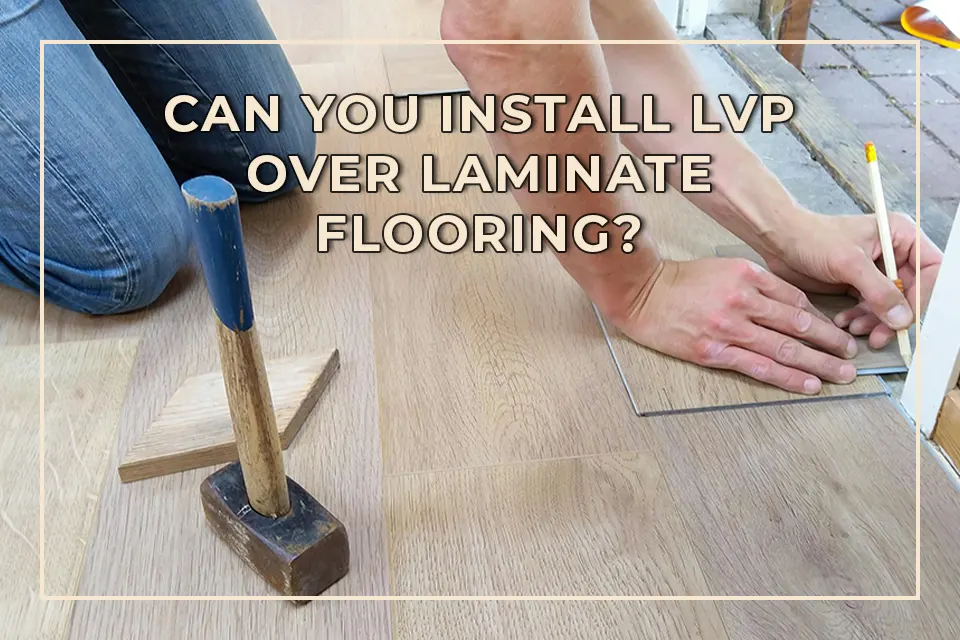
If you’re looking to upgrade your flooring while saving time and effort, you may be wondering whether you can install Luxury Vinyl Plank (LVP) over existing laminate flooring. This article will guide you through the essentials, covering the benefits, preparation, installation process, and important considerations to help you make an informed decision.
Understanding Luxury Vinyl Plank (LVP)
Luxury Vinyl Plank (LVP) has gained immense popularity in recent years thanks to its durability, versatility, and aesthetic appeal. LVP mimics the look of hardwood or stone but is more water-resistant and easier to maintain. It’s available in various styles, colors, and textures, making it an attractive option for many homeowners. LVP can also be installed using different methods, including glue-down, click-lock, or loose lay, providing flexibility depending on your project’s requirements.
Benefits of Installing LVP Over Laminate Flooring
Installing LVP over laminate flooring can offer several advantages. First, it can save you significant time and effort since you don’t have to remove the existing laminate. This can be particularly appealing if you’re short on time or don’t want the hassle of a major renovation project.
Moreover, the thickness of LVP can help in leveling out minor imperfections in the existing laminate. This means that if your laminate has some minor wear and tear, LVP can provide a fresh, smooth surface without the need for extensive repairs.
Additionally, choosing LVP can also enhance your home’s value. Since LVP is popular among homebuyers and renters due to its modern appearance and durability, upgrading your floors can be seen as a worthwhile investment in your property.
Preparing the Existing Laminate Floor
Before you begin the installation process, proper preparation of your existing laminate floor is crucial. Ensuring that the surface is clean, dry, and level will prevent issues in the future, such as warping or uneven seams. Begin by thoroughly cleaning the laminate floor with a suitable cleaner to remove any dirt, grime, or residues. Pay close attention to the corners and edges where dust can accumulate.
Next, assess the condition of the laminate flooring. Look for any loose planks, damaged areas, or significant height differences between the planks. If you encounter any loose tongue-and-groove connections, reattach them with adhesive. It’s also essential to repair any significant damage, as this can affect the integrity of the new LVP installation.
If you notice that your laminate flooring has high or low spots, you may need to use a leveling compound to create a more uniform surface. This will help your new LVP lay flat without any lumps or gaps which can lead to wear and tear.
Installation Process of LVP Over Laminate Flooring
Once the preparation is complete, you can proceed with the installation of your LVP over the existing laminate flooring. Ensure you have all the necessary tools and materials, including LVP planks, underlayment (if required), a utility knife, measuring tape, a straight edge, and spacers.
Step 1: Choose Your Installation Method
Depending on the type of LVP you choose, the installation method may vary. Click-lock planks are popular for DIY installation due to their user-friendly design. If you choose a glue-down option, you will need additional adhesive as per the manufacturer’s guidelines.
Step 2: Acclimate the LVP
Before installation, allow the LVP to acclimate to the room temperature and humidity for at least 48 hours. It helps reduce expansion or contraction after installation, which can lead to buckling or gaps.
Step 3: Lay the Underlayment (if needed)
If your LVP requires an underlayment, lay this down over your prepared laminate floor. An underlayment acts as a barrier and provides additional cushioning and sound dampening. Ensure that you follow the manufacturer’s guidelines for underlayment material and installation.
Step 4: Begin Laying the LVP
Start laying your LVP along the longest wall in the room, using spacers to maintain expansion gaps—typically ¼ inch—from the walls. As you work your way across the room, stagger the seams of the planks for a more natural look. Continue this process until the entire area is covered, ensuring that each plank clicks securely or adheres properly, depending on your chosen installation method.
Finishing Touches
After you lay all the LVP planks, remove the spacers and install baseboards or quarter-round moldings to cover the expansion gap around the edges. This adds a polished look and helps protect the edges of the flooring. If you’ve followed the necessary steps, you should now have a beautiful new floor that enhances your home.
Important Considerations
While there are significant benefits to installing LVP over laminate, there are also key considerations worth noting. Firstly, if your laminate flooring is very loose or damaged, it may be more prudent to remove it before installing LVP. This helps ensure your new flooring has a stable foundation.
Moreover, if the existing laminate is very textured, this may lead to uneven surfaces on your new LVP. In this case, additional underlayment can help to smooth out any rough areas, but it’s essential to consider any height differences it might create with adjacent floors.
Keep in mind that installing LVP over laminate flooring may void warranties on either product, so check the manufacturer’s specifications before proceeding. Ensuring that both flooring options are suitable for layering can help you avoid future headaches.
Conclusion
In summary, it is indeed feasible to install Luxury Vinyl Plank flooring over existing laminate flooring, provided you take the necessary precautions and prepare adequately. This method can save you time and effort while delivering a modern, appealing finish to your home. However, it’s important to assess the condition of your current laminate, as well as follow proper installation techniques to ensure a durable and appealing flooring solution. With the right planning and execution, your DIY flooring project can lead to stunning results that enhance your home.
FAQs
1. Can I install LVP over any type of laminate flooring?
While you can install LVP over most laminate floors, ensure that the laminate is in good condition and free of significant damage. Avoid installation over carpets or any flooring materials that move easily.
2. Do I need an underlayment when installing LVP?
An underlayment may or may not be necessary, depending on the type of LVP you purchase. Always refer to the manufacturer’s instructions to determine if an underlayment is required.
3. Will installing LVP over laminate increase the height of my floor?
Yes, installing LVP over laminate will raise the floor height slightly. It’s essential to consider this if you have doors or adjacent flooring that may be affected by the increase in height.
4. How do I maintain LVP flooring after installation?
Regular sweeping or vacuuming will help remove dirt and dust. For deeper cleaning, use a damp mop with a mild cleaning solution recommended for vinyl floors, avoiding harsh chemicals.
5. What should I do if my LVP starts to buckle or warp?
If your LVP begins to buckle, check for moisture, inadequate expansion gaps, or a poorly prepared subfloor. Address these issues and, if needed, consult a flooring professional for advice or repairs.
DIY Closet
What Causes Black Mold on Cinder Blocks?
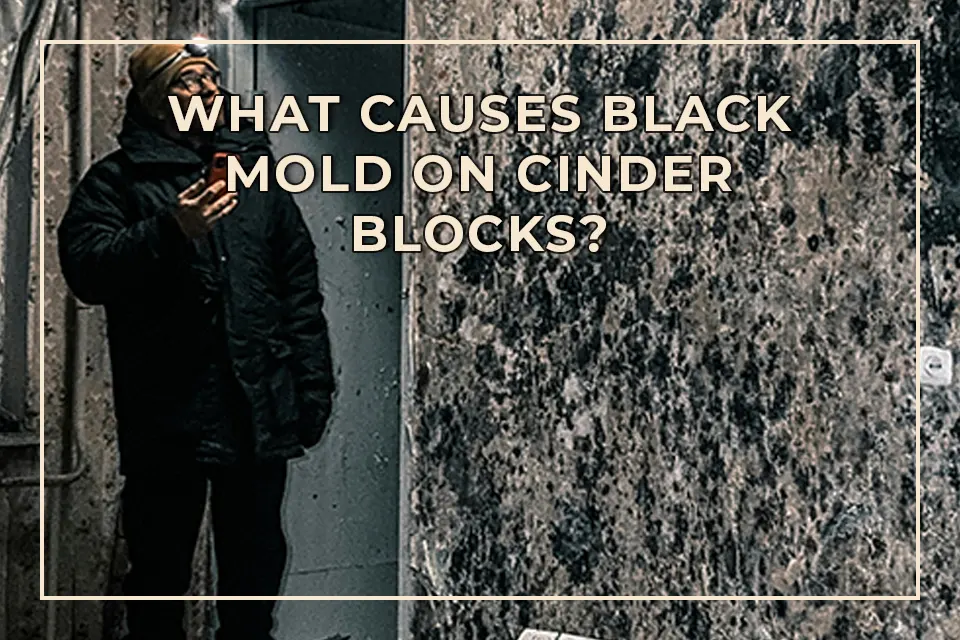
Black mold can be a concerning issue for homeowners, especially when it appears on cinder blocks. This article explores the factors that contribute to the growth of black mold on these concrete materials. Understanding the causes can help in prevention and remediation, ensuring a healthier living environment.
Understanding Cinder Blocks
Cinder blocks, also known as concrete masonry units (CMUs), are lightweight building materials made from a mixture of cement and aggregate, typically ash or slag. These blocks are commonly used in construction for walls, foundations, and other structural purposes. They are durable, fire-resistant, and provide good insulation properties.
While cinder blocks are robust, they can be susceptible to black mold growth under certain environmental conditions. The porous nature of cinder blocks allows moisture to enter, which creates an ideal breeding ground for mold spores. Recognizing the causes of mold growth on these surfaces can help homeowners take proactive measures to prevent this issue.
Excess Moisture as a Primary Cause
The presence of excessive moisture is the primary factor that contributes to black mold growth. Cinder blocks can absorb water like a sponge due to their porous structure. When rainwater leaks into walls, or when humidity levels are high, the moisture within the blocks can remain trapped, leading to mold growth.
In basements, crawl spaces, or areas with poor ventilation, humidity is often higher than in other parts of the home. This environment can become a breeding ground for mold spores, especially if water seeps through cracks or around the foundation. Therefore, maintaining low humidity levels and ensuring proper drainage can help mitigate the chances of mold developing on cinder blocks.
Poor Ventilation Increases Mold Growth Risks
Another contributing factor to the growth of black mold on cinder blocks is poor ventilation. Areas with limited airflow can quickly become damp, creating an ideal environment for mold. Cinder block walls, especially in basements and utility rooms, may not get adequate ventilation, leading to stagnant air and moisture accumulation.
To combat this issue, homeowners should consider improving airflow in these areas. This may involve installing vents, using exhaust fans, or simply keeping doors and windows open to increase circulation. Good ventilation can help reduce humidity levels and dry out any moisture present on cinder blocks, thereby hindering mold growth.
Condensation: A Hidden Cause
Condensation often goes unnoticed but can be another hidden cause of black mold on cinder blocks. When warm, humid air comes into contact with cooler surfaces, such as cinder block walls, moisture in the air condenses into water droplets. This can create a damp environment where mold can thrive.
To reduce condensation, it is important to manage indoor humidity levels. Using dehumidifiers and maintaining a consistent temperature throughout the home can help prevent the conditions that lead to condensation. Additionally, insulating cinder block walls can help reduce temperature differences, minimizing the risk of moisture accumulation.
Cracks and Leaks: Pathways for Mold
Physical damage to cinder blocks, such as cracks or leaks, can provide pathways for water to enter, increasing the likelihood of mold growth. These flaws can be the result of settling foundations, weathering, or other forms of wear and tear over time. Once water begins to infiltrate through these cracks, it can become trapped within the blocks, fostering an environment ripe for mold development.
Homeowners should regularly inspect their cinder block structures for signs of damage. Timely repairs can prevent small issues from becoming larger ones. Sealing cracks and repairing leaks with appropriate materials will help keep moisture from entering the blocks, reducing the potential for mold growth.
Organic Material: A Nutrient Source for Mold
While cinder blocks themselves do not provide organic material for mold, other building materials and environmental factors can introduce nutrients that support mold development. For instance, dirt, dust, and debris settling on the surface of the blocks can provide a food source for mold spores. Additionally, if there are any wooden structures or organic matter nearby, they can contribute further to mold growth.
To reduce the presence of organic material, regular cleaning of cinder block surfaces is essential. Sweep or vacuum away dirt and dust to minimize the organic nutrients available for mold. Furthermore, addressing any nearby sources of organic matter, such as decaying plants or wood, can also help control mold growth.
Temperature Conditions Favoring Mold
Temperature plays a critical role in mold growth, with warmer conditions being more conducive to development. Black mold thrives in temperatures between 60°F and 80°F, making it particularly problematic during warm summer months when humidity levels can also rise.
To combat these conditions, maintaining a consistent and comfortable indoor temperature can help inhibit mold development. Using air conditioning during hot weather can help lower humidity levels and create an environment that discourages mold.
Importance of Regular Maintenance
Regular maintenance of your home is crucial in preventing mold growth on cinder blocks and other surfaces. This includes checking for moisture issues, ensuring good drainage around the property, and conducting regular inspections. Moreover, keeping gutters clean and ensuring downspouts direct water away from the foundation can significantly reduce the risk of water intrusion.
Investing time in routine checks can save homeowners from costly mold remediation efforts in the long run. A proactive approach not only addresses current issues but also helps identify potential problems before they become severe.
Remediating Mold on Cinder Blocks
If black mold is already present on cinder blocks, immediate action is necessary. The first step is to assess the extent of the mold growth. For small areas, a DIY approach may suffice. Homeowners can use a mixture of water and detergent to scrub the mold off the surface. Protective gear, such as gloves and a mask, should be worn to avoid inhaling mold spores.
In more severe cases, hiring a professional mold remediation service is advisable. They have the expertise and equipment to effectively remove mold and address the underlying moisture issues that allowed it to grow in the first place.
Conclusion
Black mold on cinder blocks poses risks to both the integrity of your home and the health of its occupants. Understanding the causes—such as excessive moisture, poor ventilation, cracks, condensation, and the presence of organic material—can empower homeowners to take preventative measures. Regular maintenance and timely repairs play crucial roles in creating an environment unfriendly to mold. By staying vigilant, homeowners can enjoy a safe, healthy living space free from the dangers of black mold.
FAQs
1. What are the health effects of black mold exposure?
Black mold exposure can cause various health issues, particularly respiratory problems, allergies, and headaches. It is essential to address mold growth promptly to mitigate these health risks.
2. Can I remove black mold from cinder blocks myself?
Yes, for small areas, you can remove black mold using a mixture of detergent and water. However, protective gear is recommended, and for larger infestations, professional help may be necessary.
3. How can I prevent black mold from returning after remediation?
To prevent black mold from returning, ensure good ventilation, control humidity levels, repair leaks, and keep the cinder block surfaces clean and dry.
4. Is it possible to seal cinder blocks against moisture?
Yes, applying a waterproof sealant can help protect cinder blocks from moisture intrusion, reducing the risk of mold growth.
5. How often should I check for mold in my home?
Regular checks are advisable, especially in areas prone to moisture like basements and crawl spaces. Aim for at least once every season, or more frequently if you notice any signs of water intrusion or humid conditions.
DIY Closet
What Is a Bullnose Hanger and How Is It Used?

A bullnose hanger is a specialized type of hardware used primarily in construction and home improvement projects. Designed for strength and versatility, it supports a variety of applications, especially when it comes to hanging items like shelves, artwork, and other fixtures. Understanding bullnose hangers can enhance your DIY skills and improve your home’s functionality.
What is a Bullnose Hanger?
Bullnose hangers are heavy-duty brackets often utilized for hanging objects securely onto walls or ceilings. Their unique design features a rounded edge or “bullnose,” which offers more surface area for weight distribution. This characteristic makes them ideal for applications requiring stability, such as supporting shelves, holding pipes, or even mounting furniture.
These hangers come in various materials, including steel and plastic. Steel bullnose hangers offer maximum durability, making them suitable for heavy loads. In contrast, plastic versions are lightweight and often used for less demanding applications. The choice of material can significantly affect the strength and purpose of the bullnose hanger.
How Bullnose Hangers are Made
The manufacturing process of bullnose hangers typically involves molding or bending metal or plastic into the desired shape. When made of metal, they might undergo processes like welding or strengthening treatments to enhance durability. After production, these hangers are often coated with protective finishes to prevent rust and ensure longevity, particularly in damp or outdoor environments.
In many cases, bullnose hangers are designed based on specific load requirements, meaning manufacturers take careful considerations into how much weight each hanger can safely bear. This attention to detail ensures that users can select the most appropriate version for their needs, providing peace of mind in their applications.
Common Uses of Bullnose Hangers
One of the primary applications for bullnose hangers is in shelving systems. When outfitting a closet or a home office, these hangers provide solid support that’s essential for preventing sagging or collapse under weight. They are also favored in garage storage solutions, where heavy tools and equipment need secure placement.
Beyond shelving, bullnose hangers are also extensively used in bathroom installations. They can securely hold towel racks, toilet paper holders, and other accessories that withstand daily usage. This reliability makes it an attractive option for homeowners looking to enhance functionality while maintaining a clean aesthetic.
Additionally, bullnose hangers find their place in fast-growing gardening and landscaping projects. For example, they can be applied to support various piping systems or even assist in hanging garden tools. Their versatility makes them valuable in almost every area of home improvement.
How to Install a Bullnose Hanger
Installing a bullnose hanger is a straightforward process but requires attention to detail. Begin by choosing the appropriate location for your hanger and marking drilling points with a level to ensure that your item will hang evenly. It’s vital to bear in mind that the weight of what you intend to hang will determine the size and number of hangers needed.
Next, drill holes at the marked points, ensuring that you have the right drill bit size to fit your chosen anchors (if using). Insert wall anchors as needed; these add an extra layer of support, especially when dealing with drywall or other softer materials. Once your anchors are secure, position the bullnose hanger and screw it in place utilizing the necessary hardware.
After attaching the hanger, double-check its stability by gently pulling or pressing on it. If it feels secure, you can confidently mount your items. This step is crucial for safety as a poorly installed hanger may lead to accidents or damage down the line.
Tips for Choosing the Right Bullnose Hanger
When selecting a bullnose hanger, consider a few factors to ensure you make the best choice. First, gauge the weight of the items you plan to hang. Each hanger has a specific weight limit, and exceeding this can lead to failure. Check the manufacturer’s specifications for details to avoid any mishaps.
Next, consider the material of the hanger. For lighter applications, plastic hangers may suffice, whereas heavier tasks generally necessitate steel or other durable materials. This choice can also influence the hanger’s ability to resist corrosion and wear, particularly in outdoor settings.
Lastly, think about the design elements you want to incorporate into your space. Bullnose hangers come in various styles and finishes, allowing you to select options that fit your aesthetic preferences. Whether you prefer a minimalist look or something more ornate, there are variations available to suit diverse tastes.
Everyday Applications in Different Environments
Bullnose hangers are not just limited to residential settings. They’re also commonly found in commercial environments, including retail spaces, offices, and warehouses. Business owners often use them for organizing tools, hanging signage, or ensuring safety equipment is easily accessible.
In educational environments, classrooms and workshops benefit from bullnose hangers as well. They can support project supplies such as art materials, tools, or any other frequently used items. This helps keep spaces tidy and allows for smooth workflows, emphasizing the multifunctionality of these hangers.
For DIY enthusiasts, integrating bullnose hangers into various projects can serve as a starting point for more complex builds. With their sturdy makeup, hangers provide reliable support for features like custom-built desks, shelves, or even cabinetry, making them essential in any DIY toolbox.
Maintenance of Bullnose Hangers
Taking care of bullnose hangers can prolong their lifespan and ultimately safeguard your possessions. Regularly check for rust, especially if they are located in a high-moisture area. If rust appears, sanding and then repainting can help restore their protective finish.
Furthermore, inspect for any signs of stress or wear. This includes checking the securing screws and ensuring they are tight and stable. If you notice any signs of damage or loosening, replacing the hanger before it fails will help avoid accidents and maintain safety.
Conclusion
Bullnose hangers are invaluable tools in both home improvement and professional settings. Their unique design not only offers strength and stability but also versatility for a wide range of applications. By understanding what they are, how they’re used, and tips for selection and installation, homeowners and DIY enthusiasts can reap the benefits of these functional components. Investing time in understanding and utilizing bullnose hangers can contribute significantly to a well-organized, efficiently functioning space.
FAQs
1. Can bullnose hangers be used both indoors and outdoors?
Yes, bullnose hangers can work well in both indoor and outdoor settings, provided you choose the appropriate material. Steel hangers are preferable outdoors due to their durability and resistance to weather conditions.
2. Are bullnose hangers adjustable?
Most bullnose hangers are fixed and designed for a specific use, but some adjustable variants may be available. Check the specifications beforehand if flexibility is needed for your application.
3. Can I paint bullnose hangers to match my decor?
Yes, you can paint bullnose hangers. Just ensure you use a suitable primer and paint that adheres well to the material of the hanger for the best results.
4. What tools are needed for installing bullnose hangers?
Basic tools for installation include a drill, screwdriver, level, measuring tape, and a pencil for marking. Depending on the installation surface, you may also need wall anchors.
5. How much weight can a bullnose hanger support?
The weight capacity of a bullnose hanger depends on its material and size. Always refer to the manufacturer’s guidelines for precise weight limits to ensure safety.
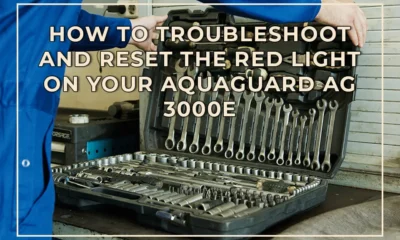
 DIY Closet1 year ago
DIY Closet1 year agoHow to troubleshoot and reset the red light on your Aquaguard AG 3000E
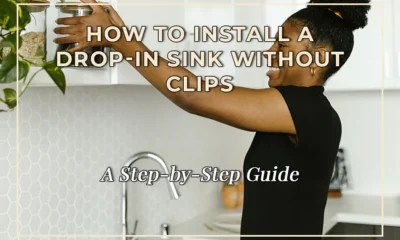
 DIY Closet1 year ago
DIY Closet1 year agoHow to Install a Drop-In Sink Without Clips: A Step-by-Step Guide

 Bug Fixing1 year ago
Bug Fixing1 year agoUnderstanding the Cost of Furnace Collector Box Replacement: What to Expect

 DIY Closet1 year ago
DIY Closet1 year agoPergola Design: Understanding the Maximum Span for 6×6 Beams

 DIY Closet1 year ago
DIY Closet1 year agoThe Best Nails for Luan: A Comprehensive Guide

 Bug Fixing1 year ago
Bug Fixing1 year agoPigtail vs Daisy Chain Outlets: Which is Better for Your Home?

 DIY Closet1 year ago
DIY Closet1 year agoHow to Build a Free Standing 6×6 Post Swing Set: A Step-by-Step Guide

 DIY Closet1 year ago
DIY Closet1 year agoUnderstanding the Benefits of a 400 Amp Meter Base with Two 200 Amp Disconnects













